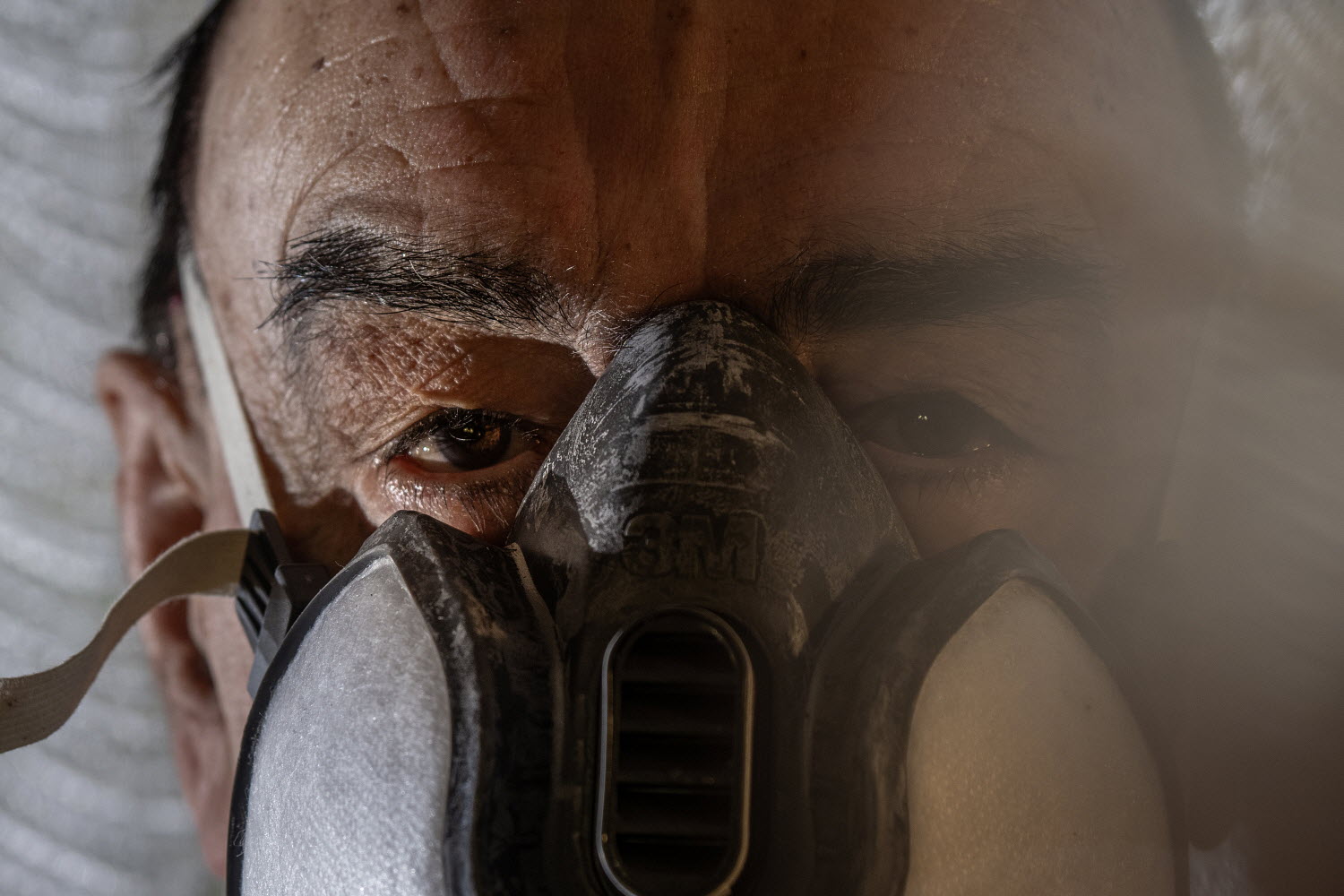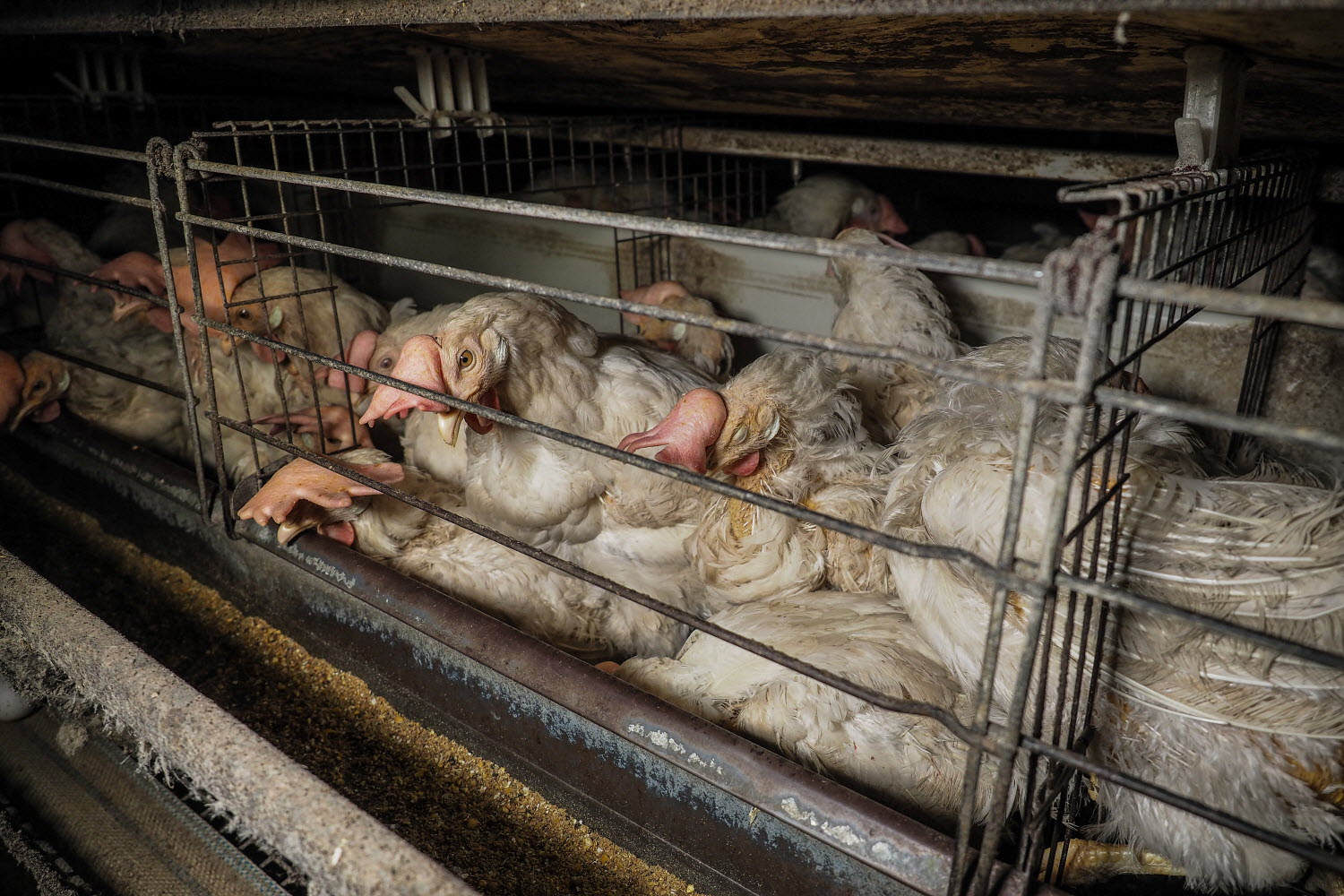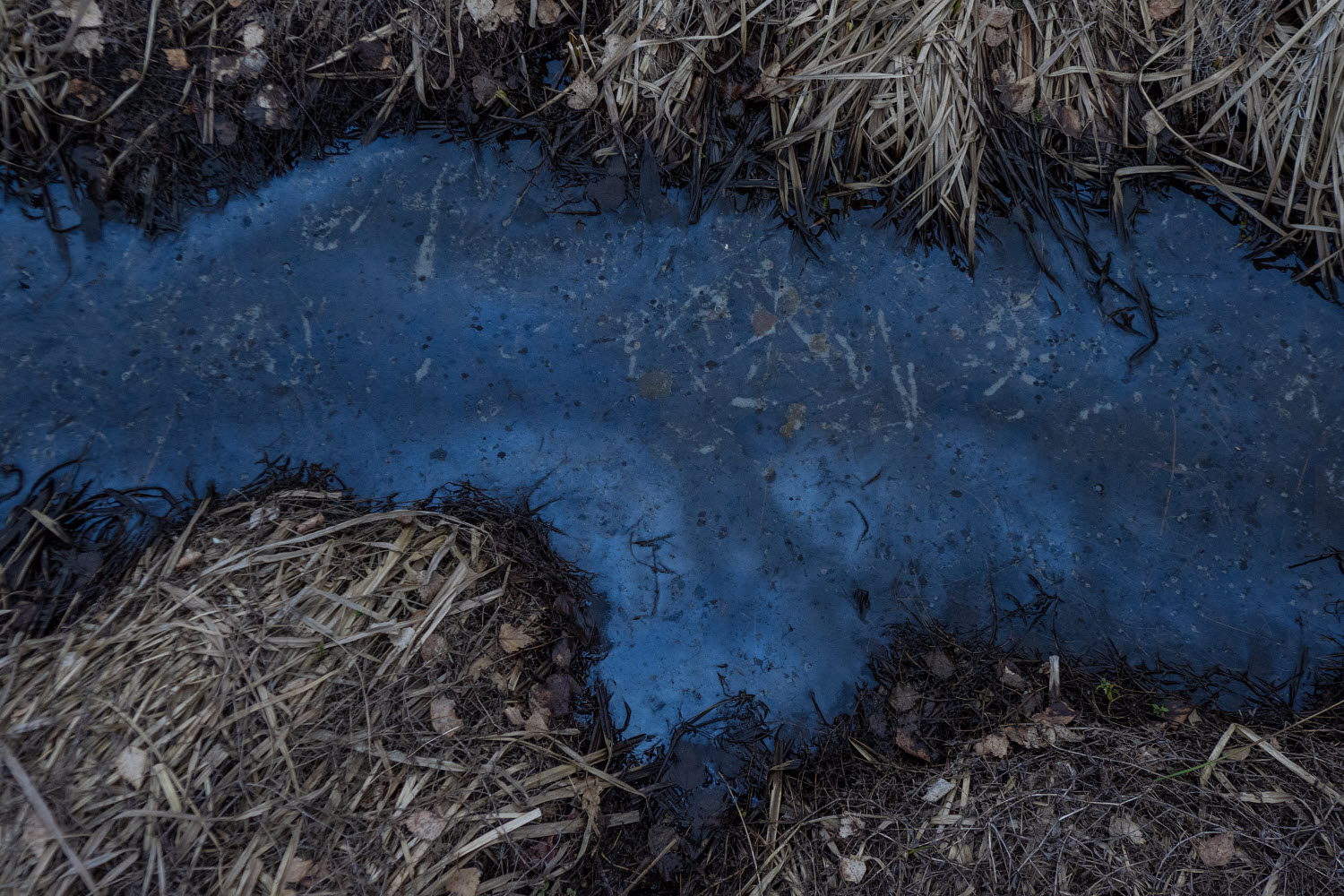Long Shadow
Text and photos by Selene Magnolia Gatti/Panos Pictures
Abridged by Syharn Shen (沈思含)
Long Shadow
Text and photos by Selene Magnolia Gatti/Panos Pictures
Abridged by Syharn Shen (沈思含)

Pigs that survived severe flooding at a factory farm stand in contaminated water. Extreme weather, worsened by years of drought, caused nearby rivers to overflow. Factory farms amplify environmental risks, turning floods into biological hazards.
Welcome to the Anthropocene, where chicken bones may mark our era. Factory farming has exceeded environmental safety limits, with 11 billion chickens, 142 million pigs, 76 million cattle, 62 million sheep, and 12 million goats raised annually in Europe. This intensive farming system, the dominant method of meat, dairy, and egg production, is one of the world's most polluting industries, responsible for nearly 15% of global greenhouse gas emissions. Yet, its direct impact on local environments remains underexplored.
Over the past two decades, European animal agriculture has transformed, favoring larger, specialized farms. Sterile, monotonous stables and towering silos increasingly define rural landscapes, casting long shadows over their surroundings. Noise, toxic air, disease, and water pollution plague neighboring communities, reshaping local ecologies and endangering public health.
In Italy's Po Valley, Giorgio B. lives amid an overwhelming stench of ammonia from nearby farms. "I lost my wife to an infection no antibiotic could cure. My grandchildren no longer visit; sometimes, the smell is unbearable. I vomit, lose consciousness, and must wear a mask." The Po Valley, Europe's most polluted region, is densely packed with livestock farms, making daily life a struggle.

Giorgio, a local resident, wears a mask to shield himself from the noxious fumes of nearby factory farms. Living near an intensive cattle farm, biogas plant, and chicken farm, he has suffered severe nausea, loss of consciousness, and repeated hospital visits. The pollution has shattered his daily life and driven his family away.
Across Europe, proximity to factory farms brings similar afflictions. In Murcia, Spain, Merchora Martinez, living 39 meters from a pig farm, suffers asthma-like symptoms and chronic headaches. The putrid air triggers nausea and deepens her depression. The oppressive stench forces residents indoors, ruins gardens, and withers trees. Life's simplest pleasures—drying clothes outside, opening a window—become burdens.
Toxic emissions from factory farms include hydrogen sulfide, ammonia, and fine particulate matter (PM2.5), a Group 1 carcinogen. Exposure to PM2.5 is linked to heart and lung diseases, with an estimated 253,000 premature deaths in Europe annually. In heavily farmed Dutch regions, residents report chronic respiratory conditions. "I developed asthma after living here for ten years," says Ans van Maris from Deurne. "I stay indoors because the air is unbearable. When I travel away, I can breathe again."
Animals in factory farms endure cruel conditions: overcrowding, artificial lighting, deafening noise, filth, and disease. Chickens have less than an A4 sheet of space, while sows are confined in crates too small to turn around. These unhygienic environments are breeding grounds for pathogens. Industrial farms have been linked to influenza strains like H1N1 and H5N1, African Swine Fever, and antibiotic-resistant bacteria. Studies suggest factory farm regions suffered more severe COVID-19 outbreaks.

Egg-laying hens crammed into cages on an intensive farm, barely able to move. The overcrowded and unsanitary conditions define the brutal reality of industrial egg production.
Fifteen years ago, the Netherlands faced a Q-fever outbreak from infected goats, killing at least 116 people and leaving thousands with chronic fatigue syndrome. Peter van Sambeek, a survivor, recalls, "I'm always tired and in pain. My memory is fading, and I've lost 70% of my life." In Herpen, where the outbreak originated, 60% of residents show autoimmune reactions against Q-fever bacteria.
Factory farms also contaminate waterways. Excess manure elevates nitrate levels, forming carcinogenic compounds in drinking water. In Spain, over 200,000 people lack access to clean water. "Once a well is contaminated, it's almost impossible to clean," warns water expert Cristina Vilanueva. In Huesca, Cristina de la Vega's tap water contains 140 mg/l of nitrates, nearly triple the EU limit. "I stopped drinking tap water in 2017. I always buy bottled water."
Many factory farm neighbors cannot afford to move, while property values plummet. In Poland's Żuromin, nicknamed "Chicken City," 80 million chickens are produced yearly, rendering homes unsellable. Agnieszka Białochławek, a police officer in Domaszkowice, blames the pig farm next door for her son's breathing difficulties. "I have nightmares of suffocating. My son was born prematurely, and I fear for his health."
Across Europe, communities suffocate under the weight of factory farming. Some fight for their land, others are trapped by financial constraints. Yet, their struggle speaks to a greater cause: envisioning a future where land, animals, and people coexist harmoniously, free from the dark shadow of industrial farming.

Polluted runoff from a pig farm seeps into the surrounding land and waterways, carrying waste and toxic chemicals into the environment.
Contact Us | Plan a Visit | Donate
8 Lide Road, Beitou 11259, Taipei, Taiwan
886-2-2898-9999
005741@daaitv.com
©Tzu Chi Culture and Communication Foundation
All rights reserved.
